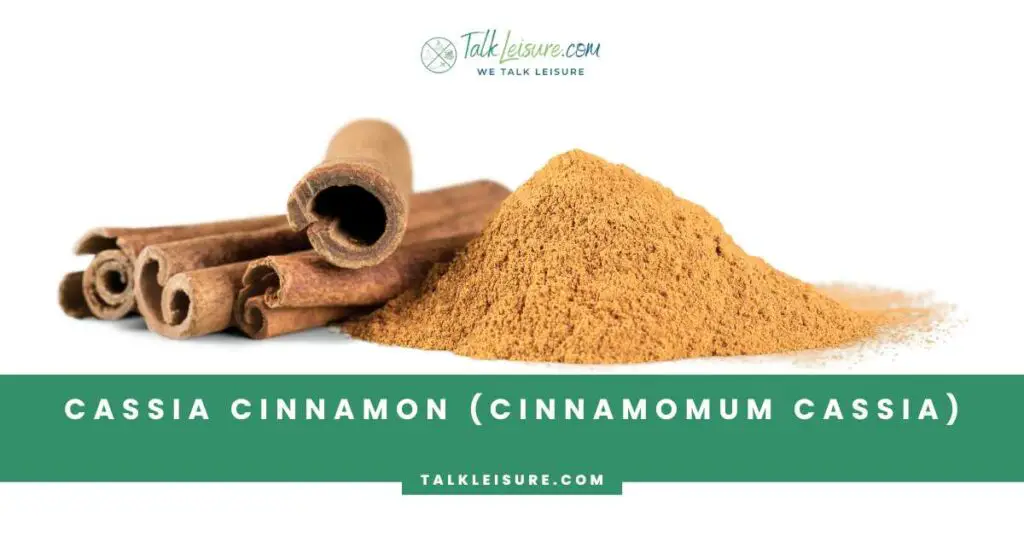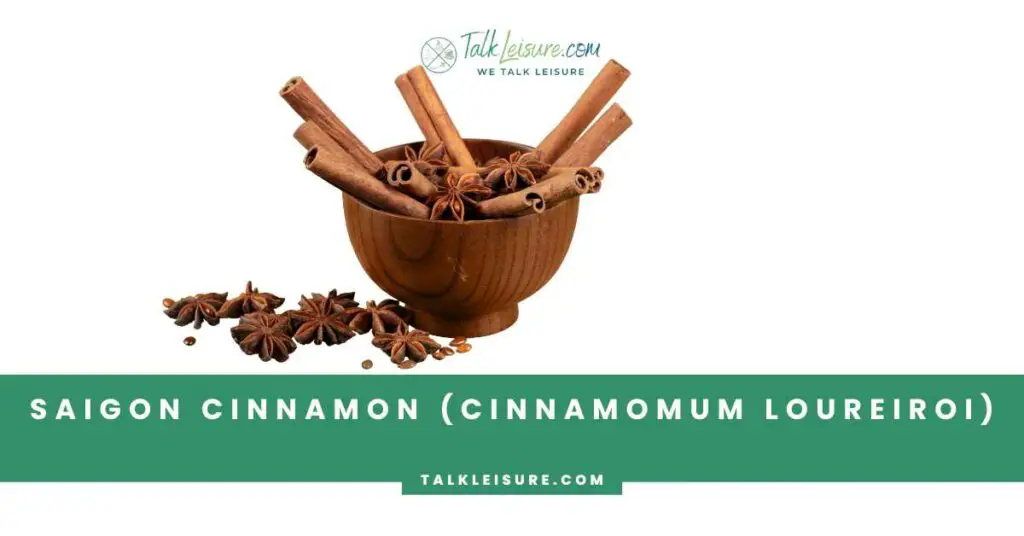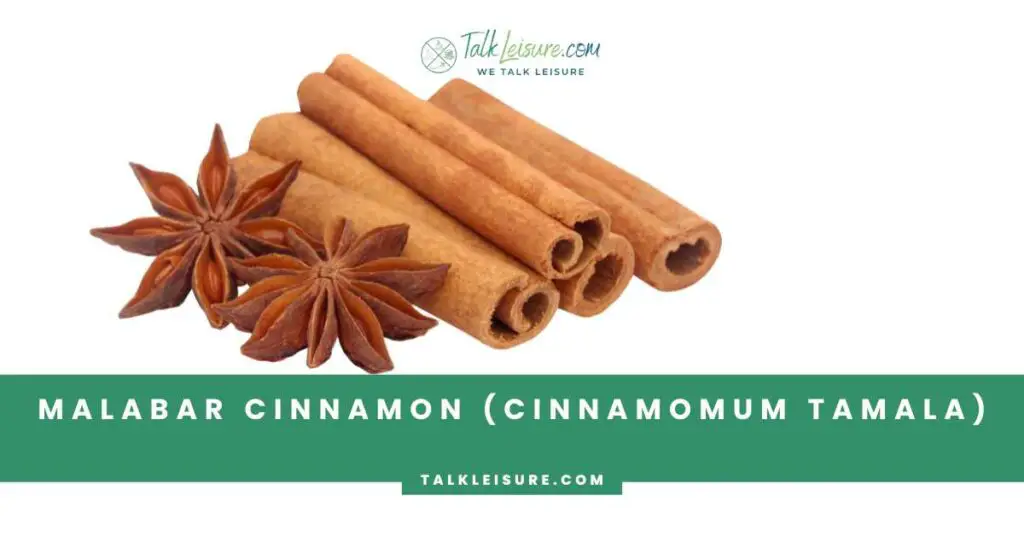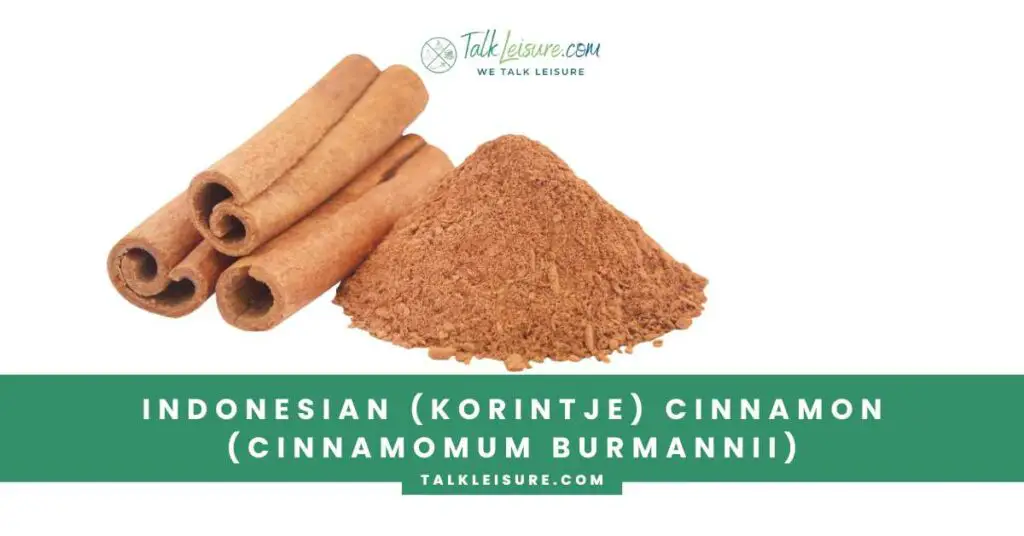Welcome to my blog where we will explore the fascinating world of cinnamon!
Cinnamon is not only a popular spice, but it also has a rich history and a wide variety of plant species.
In this article, we will discover the unique characteristics and uses of six different cinnamon plant varieties.
Get ready to embark on a flavorful journey!
Cassia Cinnamon (Cinnamomum cassia)

Cassia cinnamon, also known as Chinese cinnamon, is one of the most common and widely used varieties. It has a bold and robust flavor profile with a slightly sweet and spicy taste. Cassia cinnamon is popularly used in baking, adding warmth and richness to dishes. Its health benefits include antioxidant properties and potential anti-inflammatory effects. It’s important to note that cassia cinnamon contains higher levels of coumarin, which may be harmful in large doses.
Cassia Cinnamon characteristics and flavor profile
Cassia cinnamon, also known as Chinese cinnamon, is a common variety with a bold and robust flavor profile. Its taste is slightly sweet and spicy, adding warmth and richness to dishes. Cassia cinnamon has a reddish-brown color and a thick bark. Its aroma is warm and inviting, reminiscent of the classic cinnamon scent.
Cassia Cinnamon uses and benefits
Cassia cinnamon is a versatile spice that can be used in both sweet and savory dishes. I love adding it to oatmeal, baked goods, and even curries for a warm and spicy kick. Aside from its delicious flavor, cassia cinnamon also offers some health benefits. It has been used in traditional medicine to help with digestion, reduce inflammation, and lower blood sugar levels. So, not only does it taste great, but it’s also good for you!
Ceylon Cinnamon (Cinnamomum verum)

Ceylon Cinnamon, also known as true cinnamon, is a fascinating variety of cinnamon with its own unique characteristics. It has a light brown color and a delicate, sweet flavor that sets it apart from other types of cinnamon. Its aroma is warm and slightly citrusy. Ceylon Cinnamon is often used in baking and adds a wonderful depth of flavor to both sweet and savory dishes. Its medicinal benefits include anti-inflammatory properties and it may help lower blood sugar levels. So, if you’re looking for a more subtle and refined cinnamon experience, Ceylon Cinnamon is the perfect choice.
Ceylon Cinnamon appearance and aroma
Ceylon Cinnamon is light brown in color and has a delicate and sweet aroma. Its thin, paper-like bark curls into quills, making it easy to recognize. When ground, it has a warm and slightly citrusy fragrance that is distinct from other types of cinnamon. Its appearance and aroma add a touch of elegance to any dish or drink it is used in.
Ceylon Cinnamon culinary and medicinal uses
Ceylon Cinnamon is a versatile spice that can be used in a variety of culinary creations. Its delicate and sweet flavor adds a warm and comforting touch to desserts, beverages, and savory dishes. From sprinkling it on oatmeal and toast to adding it to curries and stews, Ceylon Cinnamon enhances the taste of any dish.
In addition to its culinary uses, Ceylon Cinnamon also has numerous medicinal benefits. It has been traditionally used to support digestive health, reduce inflammation, and regulate blood sugar levels. Its antioxidant properties may also contribute to overall well-being. However, it is important to consult with a healthcare professional before using Ceylon Cinnamon for medicinal purposes.
Saigon Cinnamon (Cinnamomum loureiroi)

Saigon Cinnamon, also known as Vietnamese Cinnamon, is a unique variety with its own distinct characteristics. It has a rich reddish-brown color and a strong, spicy flavor that is both sweet and savory. I love using Saigon Cinnamon in my baking and cooking as it adds an intense and warming aroma to dishes like curries, desserts, and spiced drinks. It is also believed to have numerous health benefits, including anti-inflammatory and antioxidant properties. So, don’t hesitate to give Saigon Cinnamon a try in your next culinary adventure!
Saigon Cinnamon appearance and potency
Saigon Cinnamon is visually striking with its rich reddish-brown color and fine texture. Just a small amount of Saigon Cinnamon can add a powerful punch of flavor to your dishes. Its potency makes it a favorite among chefs and bakers who want to elevate their recipes with a strong and aromatic cinnamon flavor.
Saigon Cinnamon uses in cooking and baking
Saigon Cinnamon is perfect for adding a bold and aromatic flavor to both sweet and savory dishes. I love using it in baked goods like cinnamon rolls, cookies, and cakes for a rich and intense cinnamon flavor. It’s also great for spicing up curries, stews, and even hot beverages like mulled wine or cider. Its potency ensures that a little goes a long way, making it a versatile spice in the kitchen.
Malabar Cinnamon (Cinnamomum tamala)

Malabar Cinnamon, also known as Indian Bay Leaf or Tej Patta, is a variety of cinnamon that originates from the Indian subcontinent. It has a dark brown color and a strong, woody fragrance with hints of clove and citrus. In Indian cuisine, Malabar Cinnamon is often used as a spice in curries, biryanis, and rice dishes. It also has several medicinal properties, including improving digestion and lowering blood sugar levels.
Malabar Cinnamon appearance and fragrance
Malabar Cinnamon, also known as Indian Bay Leaf or Tej Patta, has a dark brown color with a rough and flaky texture. Its fragrance is strong and woody, with hints of clove and citrus. The aroma of Malabar Cinnamon is highly aromatic and invigorating, adding a delightful scent to my dishes. Its distinct appearance and captivating fragrance truly make it a unique and special spice.
Malabar Cinnamon traditional and medicinal uses
Malabar Cinnamon, also known as Indian Bay Leaf or Tej Patta, has been used in traditional medicine for its numerous health benefits. It is believed to have anti-inflammatory properties and can help in digestion and respiratory issues. It is also used as a natural remedy for diabetes, promoting heart health, and boosting immunity. Including Malabar Cinnamon in your diet can be a great way to support your overall well-being.
Indonesian (Korintje) Cinnamon (Cinnamomum burmannii)

Indonesian (Korintje) Cinnamon, scientifically known as Cinnamomum burmannii, is one of the most commonly used cinnamon varieties. It has a rich and sweet flavor with a hint of spiciness. This cinnamon is popular in international cuisine, especially in dishes like curries, stews, and desserts. It adds a warm and aromatic touch to any recipe, making it a versatile spice in the kitchen. Indonesian Cinnamon is known for its high volatile oil content, which contributes to its potent flavor. It is also believed to have various health benefits, including anti-inflammatory and antioxidant properties. Adding Indonesian Cinnamon to your diet can enhance both the taste and the nutritional value of your meals.
Indonesian Cinnamon characteristics and taste
Indonesian (Korintje) Cinnamon has a distinctive reddish-brown color and a robust, sweet flavor. Its taste is rich and aromatic, with a hint of spiciness. This variety is known for its high volatile oil content, which gives it a potent and intense flavor. Indonesian Cinnamon adds warmth and depth to dishes, making it a popular spice in international cuisine. Its unique taste elevates the flavor profile of both sweet and savory recipes.
Indonesian Cinnamon in international cuisine
Indonesian Cinnamon, with its robust and sweet flavor, is a favorite spice in international cuisine. Its warm and aromatic taste enhances both sweet and savory dishes, adding depth and complexity. I love using Indonesian Cinnamon in baking, especially for cinnamon rolls and apple pies. Its intense flavor adds a delightful twist to dishes from various cultural backgrounds.
Vietnamese Cinnamon (Cinnamomum loureiroi)

Vietnamese Cinnamon, also known as Saigon Cinnamon, is a unique variety of cinnamon that originates from Vietnam. It has a rich and bold flavor with a sweet and spicy aroma. The Vietnamese Cinnamon is highly sought after for its potent taste, making it perfect for adding depth to both savory and sweet dishes. Its warm and fragrant notes make it a favorite spice in Vietnamese cuisine and a popular choice for homemade cinnamon rolls and spiced desserts. So, whether you’re looking to spice up your dishes or simply delight your taste buds, Vietnamese Cinnamon is sure to bring a delicious twist to your culinary adventures!
Vietnamese Cinnamon unique features and aroma
Vietnamese Cinnamon is truly a standout spice with its distinct features and delightful aroma. What sets it apart is its intense and bold flavor, characterized by a perfect balance of sweet and spicy notes. Its fragrance is warm and inviting, filling the air with a comforting and irresistible scent. When using Vietnamese Cinnamon, be prepared to indulge in a culinary journey like no other.
Vietnamese Cinnamon health benefits and usage tips
Vietnamese Cinnamon not only delights the taste buds but also provides numerous health benefits. Its high antioxidant content helps fight inflammation and protect against chronic diseases. Adding a sprinkle of Vietnamese Cinnamon to your morning coffee or oatmeal can boost metabolism and aid in weight loss. For a flavorful twist, try using Vietnamese Cinnamon in savory dishes like roasted vegetables or grilled meats. Remember to always use it in moderation to fully enjoy its unique flavor and benefits.





